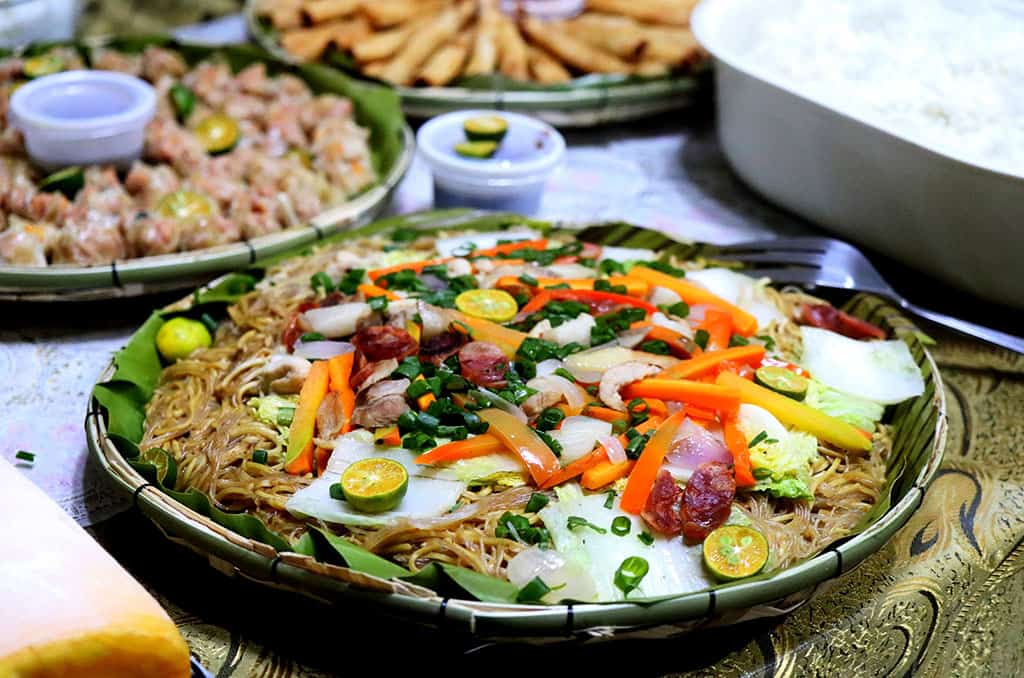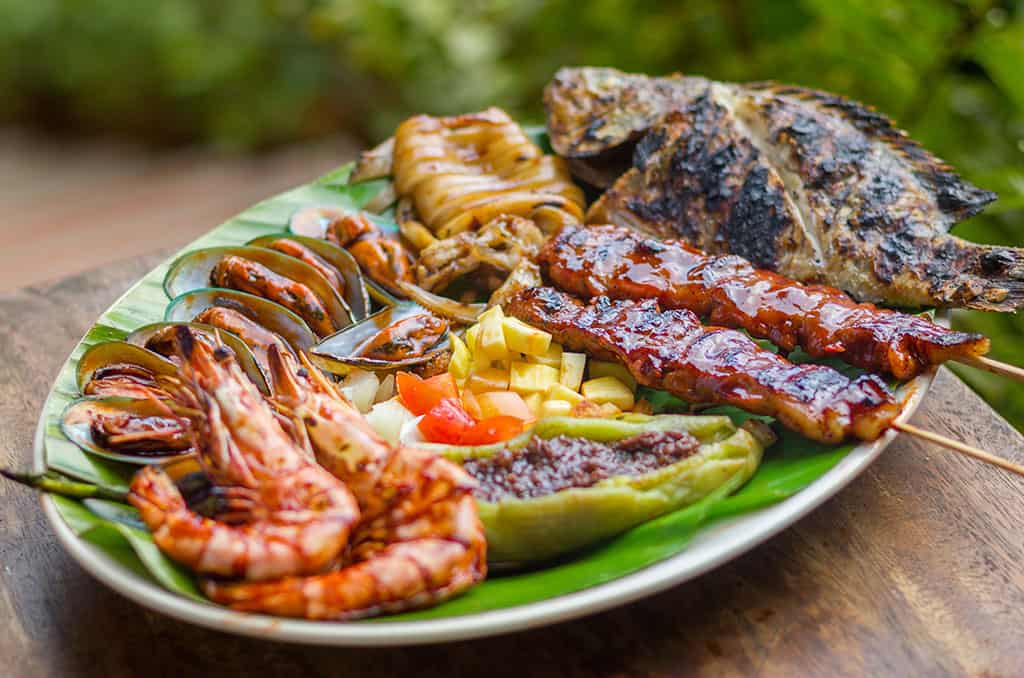
Around the Filipino dining table, no words are more commonly heard than these. It is not just an invitation, as it is more of an imposition. There is no other expected response but to agree; doing otherwise can be considered impolite and indecent, an opposition to the graces from a higher being even. The demand extends to anyone at any time. You can be a friend or a stranger, a local or a tourist. It can be over breakfast, lunch, dinner, or the many snacks taken in between. This is the Philippines’ culture of communal eating. This is salo-salo.
Tara, kain tayo! Come, let’s eat!
Salo-salo is a Filipino term that translates to feast, banquet, party, or reception. It is used to describe the celebration that comes after a wedding, a marriage proposal, or even a job promotion. For all the events that happen from life and death, there is a salo-salo expected to happen.

It is the coming together of individuals to consume—usually copious amounts of—food and libations during an extended period, sometimes spanning over 12 hours. This is an expression of the Filipino culture that considers delicious, abundant edibles as a love language. Food should always be shared. Food is always communal.
There are numerous expressions of the salo-salo deeply ingrained in the Filipino food culture. There is the handaan, which is taken from handa or to prepare. It is a common practice among Filipinos that, when there is a feast to transpire, the entire community comes together to help in the preparations. Mothers stand behind large vats of kaldereta, pancit, and fresh ube jam, stirring to no end until the flavors are perfected. Men are on standby for quick runs to the market or to fire up the grill and get the inihaw started. So as not to create a ruckus, the children are tasked to set the table and hang decorations.

The bilao, traditionally a flat and round winnowing basket, is another representation of the salo-salo. Placing the bilao, whether filled with a variation of noodles, rice cakes, or barbecued meats, on the table signals that the banquet may commence. As its shape suggests, the large vessel is meant to feed everyone around.

The kamayan, which means to eat with one’s bare hands, is another version of the salo-salo. Typically employed during boodle fights, kamayan is a way of eating taken from a military practice. Banana leaves cover a long stretch of connected tables. Various Filipino dishes, usually fried and grilled dishes, as well as rice, noodles, and fruits, are arranged for the entire assembly to dig into. The inclusion of lechon is always welcome. Once the go signal is given, partakers scoop up food using their hands and consume them with much gusto. It is joyous, rowdy even. But it is a representation of the Filipinos’ penchant to share food not only with the family but also acquaintances that come from far and wide.
“Food to the Filipino is history. It is also bond, culture, and identity…”
There are many more expressions of the culture of salo-salo. This time around, the celebration goes virtual through the IFEX Digital Expo. The signature event for the food trade sector, organized by the Center for International Trade Expositions and Missions (CITEM), IFEX is mounting its first online iteration from September 23 to 25, 2021.
The food trade show is meant to showcase the Filipino culture of salo-salo, as it aims to invite the world to eat the Filipino way. Through its numerous talks, exhibitions, and networking opportunities, the IFEX Digital Expo highlights the diversity of Filipino products and ingredients as well as the resiliency of its producers to withstand the challenges of the times.
“Food to the Filipino is history. It is also bond, culture, and identity,” says esteemed Filipino food author Doreen Gamboa Fernandez. The IFEX Digital Expo is a chance to herald no less—that Filipino food is much more delicious when shared, and everyone is more than welcome to partake.


Recent Comments